Life Extension Magazine®
Traumatic brain injury afflicts nearly 1.7 million Americans annually1 and causes devastating cognitive, emotional, and physical deficits.2
Standard therapies frequently fail to provide significant recovery after the acute phase, and chronic symptoms can linger over a lifetime. Many patients are unable to fully re-enter society.2
Innovative physicians are discovering that brain trauma can trigger deficiencies in certain hormones.2 When these hormones are restored using precise bioidentical therapy, a reversal of functional deficits associated with traumatic brain injury has been shown.
Beyond brain injuries, accumulating evidence suggests that—as rates of dementia and Alzheimer’s disease continue to explode—replenishing these same hormones may also help inhibit these degenerative brain diseases.3
Traumatic Brain Injury (TBI)

Survivors of traumatic brain injury (TBI) suffer from a broad spectrum of effects that often only show up decades later4 and continue to get progressively worse.
Conventional medical treatment frequently fails to achieve substantial recovery, and persistent symptoms can become extremely disabling.2
TBI is caused by both primary and secondary injury.5 Primary injury6 occurs from the forces at the time of injury and is believed to be irreversible.7
It is the complex secondary mechanisms that play a critical role in the delayed progression of brain damage—presenting novel opportunities for therapeutic strategies.
One of the secondary injury processes that may promote latent neuronal death is post-traumatic inflammation, which has been shown to increase blood-brain barrier permeability, cerebral edema, and intracranial pressure, resulting in neuronal dysfunction following TBI.8
Considered to be one of the “signature wounds” in veterans of both the Iraq and Afghanistan wars, mild traumatic brain injuries are often a result of blast waves from roadside bombs. Most of the 115,000 soldiers afflicted have recovered quickly, but studies suggest as many as 15% will go on to suffer lingering cognitive problems.9
But TBI can affect anyone. Car accident victims. Construction workers. People prone to falls. And quite often, athletes playing contact sports.
What you need to know
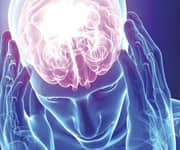 |
Reverse Brain Trauma And Inhibit Neurodegeneration
- Mainstream therapies have been largely unable to alleviate the progressive symptoms of traumatic brain injury, which often occur years after the original trauma and can include devastating cognitive, emotional, and physical effects.
- Recognizing that brain trauma triggers sex hormone deficiencies that can produce these worsening effects, some physicians are using an innovative sex hormone replacement technique that uses subcutaneous pellets to deliver bioidentical hormone replacement. Patients report rapid reversal of symptoms.
- Also, at a time of exploding rates of dementia and Alzheimer’s disease, accumulating evidence suggests that by replenishing diminished sex hormones, aging individuals can help inhibit these devastating brain-wasting diseases.
Chronic Traumatic Encephalopathy (CTE)
When former heavyweight boxing champion Muhammad Ali was diagnosed with Parkinson’s syndrome in 1984,10 it was natural to blame his sport. Repeated head blows make professional boxers prone to brain damage, including parkinsonism, tremors, and a severe form of TBI known as chronic traumatic encephalopathy (CTE)—which is the dementia-like disease associated with repeated concussions.11 CTE develops in about 20% of pro boxers.12
The repeated concussions suffered in football have been making headlines for some time now. Decades ago, football players knew they were assuming some risk of long-term damage to knees, back, or even the neck—but the risk of devastating cognitive damage was not well-known.
Offensive lineman Joe DeLamielleure played his final year in the NFL in 1985 at the age of 34.13 But years before being named to the Pro Football Hall of Fame in 2003, he began showing TBI symptoms.14
“You turn 50 and suddenly, things change,” he says. “I thought it was depression, but there were other things besides that. High anxiety. I never slept.”
His symptoms included headaches, bursts of anger, and a 68% hearing loss in his left ear, which he attributes to years of right-handed defensive linemen slapping him in the head.
“I lived football, I loved football,” DeLamielleure says. “I look at how I am now and I think, ‘Is this a temporary thing or am I going to end up like Mike Webster?’”15
Webster, a former offensive lineman and member of the Pro Football Hall of Fame, was just 50 when he died, after spending his final years suffering from dementia and parkinsonian symptoms. In his autopsy, CTE was clearly evident. The extensive brain damage included many diffuse amyloid plaques and neurofibrillary tangles, and the small projections from brain neurons known as neuritic threads were also found to contain tau protein.16 Amyloid and tau are implicated in neurodegenerative diseases, such as Alzheimer’s.17
CTE effects frequently include memory and decision-making difficulties, mood and behavior problems—including depression and hopelessness—or sudden, violent behavior. Sometimes, there are no symptoms at all.18 Evidence suggests that a high portion of retired football players develop CTE. 19,20
The autopsy conducted on ex-NFL safety André Waters after his 2006 death showed CTE, with substantial deposition of tau and neurofibrillary tangles—and a fatal, self-inflicted gunshot wound to the head.21 Prior to his suicide, Waters had suffered from cognitive and neuropsychiatric impairment, including chronic depression, suicide attempts, insomnia, paranoia, and impaired memory.22 The neuropathologist performing the autopsy said that Water’s 44-year-old brain had degenerated into that of an 85-year-old man with characteristics similar to early-stage Alzheimer’s victims.21
Waters’ experiences echo the stories of former football players such as Dave Duerson, Ray Easterling, and Junior Seau—all of whom committed suicide and were later diagnosed with CTE.23
Cognitive symptoms can be explained by neurodegenerative diseases other than CTE, especially in the absence of repeated concussions. “There is no framework to make that [CTE] diagnosis while someone is alive,” according to Robert Stern, professor of neurology and neurosurgery at Boston University School of Medicine.23
“But PET scans can be clearly indicative and diagnostic for CTE,” disagrees Gino Tutera MD, the medical director of SottoPelle® Therapy, who has written three books on bioidentical hormone replacement therapy. “And Mr. DeLamielleure has PET scans [consistent with lesions that occur as a part of] CTE.”24,25
Ex-NFL player Joe DeLamielleure’s devastating outlook was about to change dramatically.
The Superiority Of Bioidentical Hormones
 |
The synthetic hormone replacement drugs that are most often prescribed by physicians have a structure that differs from human hormones, a feature that allows them to be patented and therefore, be much more profitable.60
While synthetic hormones do reduce some symptoms of hormone deficiency, they cannot restore the natural hormone balance that optimally supports good health. The inherent differences in synthetics prevent them from communicating with many of the receptors that control crucial body functions—setting the stage for serious health problems.61
Bioidentical hormones, however, are plant-based hormone substances that precisely match the molecular structure and functionality of human hormones. Dr. Tutera’s pellet-implanted bioidentical hormones are mostly yam based.
The body recognizes bioidentical hormones, enabling them to bind appropriately to—and communicate properly with—the same receptors as their human counterparts. The body metabolizes bioidentical hormones in the same way as its own hormones, generating the same physiologic responses to provide vital support to the body’s organs, tissues, and cells.
When prescribed—and administered correctly—bioidentical hormones can benefit a variety of conditions from menopause and testosterone deficiency to weight gain and osteoporosis.62 And they are virtually free of side effects.
Every individual’s body chemistry is unique. So it is particularly relevant to SottoPelle® therapy that bioidentical hormones are not mass-produced. This means that they can be individually compounded—personally customized—to meet the exact dosage needs of each patient’s specific deficiencies, based on the results of blood testing. Of course, this level of customization is not possible with mass-produced synthetics.
New Hope For Brain Injury Victims
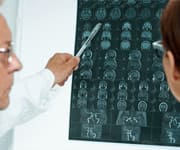
Frustrated with the lack of options within mainstream medicine, DeLamielleure sought help from Dr. Tutera, who has developed a bioidentical hormone replacement program called SottoPelle®, which is Italian for “under the skin.”
DeLamielleure and two other Pro Football Hall of Fame inductees—Paul Krause and Bobby Bell—heard that Tutera and his colleagues were having some success treating the symptoms of Parkinson’s disease patients.
“All three were skeptical, due to the fact they did not understand how [sex] hormones could affect brain function,” says Tutera. “But they were desperate for improvement.”
“This therapy helped me achieve balance in my body and mind, which I have been struggling with for a long time,” says DeLamielleure. “In just a few months, I have so much more physical energy…and mental clarity.”
Dr. Tutera has long been one of a small number of physicians delivering bioidentical hormones to replenish low sex hormones by implanting a tiny, slow-release pellet.
Unlike synthetics, bioidentical hormones are plant-based hormone substances that precisely match the molecular structure and functionality of human hormones. SottoPelle®’s is a pellet-implant delivery system of bioidentical hormones.26
Physicians generally prescribe hormone delivery orally (tablets) or percutaneously (creams or patches). But each SottoPelle® pellet—about the size of a Tic Tac®—is implanted subcutaneously (under the skin) in the patient’s hip area. A mild local anesthetic is used and the procedure takes a few minutes. Pellets are replaced periodically, according to each patient’s specific needs. Unlike other hormone replacement methods, the release of hormones from pellets increases as demanded by the body—during exercise or periods of stress, for example, when blood flow quickens. This mimics normal youthful hormone release and consistent blood levels are easily maintained.26
This novel technique was first developed in Europe in 193527 and brought to the US four years later by the late Dr. Robert B. Greenblatt. 28 However, it never found its way into mainstream medicine here.
“I first started using pellet therapy in 1992. It was taught to me by a physician who was trained by Dr. Greenblatt in the 1960s,” says Tutera. “I felt as if I had found the missing piece to my puzzle of how to help women feel better by better regulation of their hormones.”
Taking dose customization further, Dr. Tutera’s pellet therapy involves a patent-pending dosing algorithm that ensures a highly accurate dosing amount for each individual.
“Back in the early 1990s, I realized that individual dosing was the key,” explains Tutera. “The dose—which is customized to bring patients back to high-normal levels of testosterone—is dependent on age, size, how deficient they are, and other factors.”
The precise dose of each individual’s pellets is determined after blood testing to pinpoint the patient’s specific deficiencies. This level of customization is not possible with mass-produced synthetics.
DeLamielleure’s significant improvement isn’t an isolated case. Former defensive back Paul Krause relates a similar story.
Krause retired after the 1979 NFL season, was inducted into the Pro Football Hall of Fame in 1998, and still holds the all-time record for interceptions. But in his words, “Things started to go bad.”
“I started not to have fun, my memory was going, and I almost didn’t care what happened to me. I can honestly say I needed help, physically and mentally. Like many NFL players, I’ve had some dark and difficult times due to my CTE. I didn’t care if I ‘left’ or not,” he says, suggesting past suicidal thoughts.
“I went to other clinics and doctors, and they said we really can’t tell you what your problem is.”
Krause has started on Tutera’s hormone therapy and is enthusiastic about the early results.
“I’ve started feeling good again…I can concentrate, read, and relax,” he says. “It’s changed the outlook of my life: I don’t want to ‘leave’—I want to live.”
A number of other retired NFL players have turned to SottoPelle® for relief from a variety of traumatic brain injury-related complaints—including linebacker-defensive end Bobby Bell.
Retired from the game since 1974 and named to the Hall of Fame in 1983, Bell recently started bioidentical hormone therapy. He found that, “about three or four weeks out,” his worst TBI symptoms were already greatly reduced.
Tutera says he is in the early stages of treating DeLamielleure, Krause, and Bell and expects to be able to document their further recovery over time. Typically, SottoPelle® involves implanting new hormone pellets every three to six months, which varies by individual. For instance, patients DeLamielleure, Krause, and Bell will now receive their pellets every five to six months.
Beneficial effects are often seen in patients with memory fog within four weeks—which clearly demonstrates the crucial link between traumatic brain injury and hormone deficiency.
Critical Role Of Hormones In Traumatic Brain Injury—And Disease
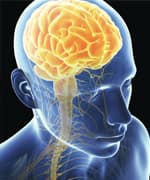
It may seem odd that hormonal balances are connected to traumatic brain injury.
However, many studies demonstrate that hypopituitarism—a condition in which the pituitary fails to produce normal hormone levels—is relatively common following TBI,29 affecting at least 50 to 76% of victims.30-32 Sometimes hypopituitarism diagnoses are not made for more than 20 years after the injury.33
Brain-injured patients who have a deficiency in growth hormone exhibit greater deficits in attention, executive functioning, memory, and emotion than patients with normal growth hormone levels.34 Growth hormone binds to receptors found in the brain, especially in regions responsible for learning and memory.35,36
The sex hormones, specifically, are also closely related to cognitive function and dysfunction. Sex hormones can function directly as neurotransmitters in the central nervous system.37
At least 16% of long-term TBI survivors develop hypogonadism—in which the testes in men or the ovaries in women produce insufficient levels of sex hormones. However, it is estimated that these deficiencies are not identified or treated in most individuals.29
As a hormone that can penetrate the blood brain barrier, estradiol promotes neuronal growth.38 It does so by decreasing inflammation and boosting the growth of dendrites, which are branched, tree-like projections at the ends of neurons that receive information from other neurons and transmit electrical stimulation to the body (soma) of the neuron. In the male brain, testosterone is converted to estradiol (in the presence of the enzyme aromatase). These activities minimize the effects of brain trauma and support healing.39
Suboptimal levels of estradiol are associated with lower scores on standardized assessments of cognition in both men and women.40 Postmenopausal women with higher levels of endogenous estradiol also have better semantic memory than women with estrogen deficiencies.41 And postmenopausal women treated with estradiol displayed improvements in executive function compared to placebo.42
Recent findings,43 confirming 27 prior studies,44 show that estrogen replacement reduces all-cause mortality and increases general well-being in estrogen-deficient women. Progesterone also protects and heals injured brain tissue.45
In a study involving over 500 aging men and women, optimum testosterone levels were linked with better performance on the Mini-Mental Status Examination.46 Several other studies concluded that testosterone levels are positively associated with multiple aspects of cognitive function. 47,48 And scientists have found that recovery of patients with traumatic brain injury is greater in those with higher testosterone levels.49
Some dietary supplements are known to protect the brain from traumatic injury. For example, post-injury administration of melatonin has been shown in animal studies to prevent dangerous short-term brain swelling and help brain tissue maintain its function.50 Also, nicotinamide—when combined with progesterone and given within about 24 hours after TBI—has been shown to improve functional recovery.51
Despite the demonstrated links between sex hormones and neuroprotection, virtually no physicians use sex hormones to treat TBI. However, over 200 SottoPelle®-trained physicians worldwide are now changing the way we think about traumatic brain injuries—and a variety of other diseases—and how to treat them effectively.
Generally, sex hormone replacement therapy is used to treat andropause and menopause. Physicians are currently exploring the use of bioidentical sex hormones to treat TBI, CTE, mood disorders including depression, cognitive deficits, fatigue, menstrual headache, and loss of libido—as well as Parkinson’s disease, type II diabetes, and multiple sclerosis (MS).
Bioidentical sex hormones have even been used to treat osteoporosis, metabolic syndrome, muscle loss, and elevated cholesterol.52-54
Perhaps most compelling, however, for aging individuals concerned about the risk of dementia, returning hormones to physiologic levels can help prevent both mild cognitive impairment (MCI) and Alzheimer’s disease!
The Link Between Traumatic Brain Injury And Hormone Deficiency
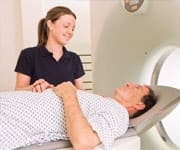 |
Most people think of hormones as the products of the endocrine glands located throughout the body. That is an accurate—but incomplete—view of these powerful biological regulatory molecules. Virtually all endocrine glands are under the control of the pituitary gland, which is located inside the skull at the base of the brain. Because of its powerful influence on the other endocrine glands, the pituitary is often referred to as the “master gland.”
But even the pituitary is subject to a higher form of control. An ancient brain structure called the hypothalamus has a direct connection to the pituitary via a unique network of veins. Regulatory molecules from the hypothalamus “tell” the pituitary how much of its hormones and hormone-releasing factors to produce.63 And the hypothalamus, as part of the brain itself, receives constant neurological input from all over the body, creating a host of feedback loops. It is those feedback loops that maintain a steady balance between extreme biochemical states.
That connection between the brain’s hypothalamus and the endocrine system’s pituitary is called neuroendocrine function. And, although it may seem obvious, medical science is only just beginning to recognize that trauma to the brain, even apparently minor trauma, can damage the hypothalamic-pituitary system and have profound effects on hormonal function.
In fact, most people—including the majority of physicians—assume that the neurological deficits that follow a traumatic brain injury result simply from disruption to brain tissue itself. In this simplistic model, a hit to the head causes the brain to be “rattled,” triggering bleeding, bruising, and other large-scale injuries that can be seen on MRI and CT scans. And it’s true that we can predict some of the deficits a brain-injured person will sustain by evaluating the location and severity of the damage that is visible using those scans.
But victims of traumatic brain injury frequently have sustained neurological deficits that exceed what would be predicted simply by examining brain scans. Unfortunately, people with so-called minor traumatic brain injury, who comprise the largest group of brain-injured patients, have no visible damage at all on brain scans.
It is disrupted hormonal function, not simply physical “brain damage,” that creates the sustained neurological deficits suffered by victims of traumatic brain injury.
Sex Hormones May Inhibit Alzheimer’s Disease
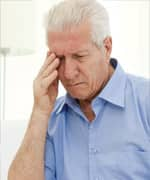
Whether due to TBI or aging, sex hormone insufficiency is increasingly linked to dementia. For instance, age-related declines in sex hormones significantly contribute to Alzheimer’s disease risk in both men and women.3
And just as Dr. Tutera has shown that TBI symptoms can be treated and possibly reversed with sex hormones, the same hormones have been shown to reduce the risk of neurodegenerative diseases such as Alzheimer’s disease3—the sixth-leading cause of death in the US.56
Both estrogens and androgens provide a broad range of neuroprotective activities. Some of these are relevant to normal brain aging, others may benefit neurodegenerative conditions, and still others appear to be largely specific to Alzheimer’s disease.3
Testosterone levels were found to be lower in Alzheimer’s patients, and some studies suggest that low free testosterone may precede Alzheimer’s onset. Also, in observational studies, testosterone levels were positively associated with global cognition, memory, executive functions, and spatial performance. 57
Various studies suggest that there might be an optimal testosterone level beyond which there is no further cognitive benefit. In fact, excessively elevated levels may hinder improvement in cognition and have negative effects.57 This demonstrates the necessity for hormonal testing. It also reinforces the superiority of the SottoPelle® process, which customizes pellets to meet the specific dosage needs of each individual patient.
Similarly, evidence suggests that estrogen replacement therapy in postmenopausal women may protect against Alzheimer’s. Since testosterone also declines in postmenopausal women, estrogen therapy supplemented with androgens may provide women with additional protection against Alzheimer’s.58
Estrogen has been shown to inhibit the pathways of Alzheimer’s by counteracting the neuropathologic changes, the deficiency in the neurotransmitter acetylcholine, and the brain cell death seen in this disease.4 Tutera explains that the mechanisms for this Alzheimer’s protection include:
- Increased dendrite spine density,
- Enhanced synapse formation,
- Modulated nerve growth factor activity,
- Production of neurotransmitters (such as acetylcholine),
- Increased apolipoprotein E levels,
- Anti-inflammatory effects,
- Increased breakdown of amyloid precursor protein resulting in less beta-amyloid,
- Enhanced blood flow,
- Augmented glucose uptake and metabolism, and
- Reduced glucocorticoid elevations.
Recently, the Global Experts Consensus Panel in Philadelphia recommended assessment of hypopituitarism for moderate and severe TBI patients—including testing for fasting serum testosterone in men and estradiol in women—at three and 12 months after discharge from intensive care.59
Considering accumulating evidence that low levels of these same hormones are a risk factor for Alzheimer’s disease, hormone testing may be advisable not just for people with brain trauma, but for all aging individuals.
This is one reason why so many Life Extension members order the Male or Female Blood Test Panel, which measures a wide range of hormones involved in neurological processes including testosterone, estrogen, progesterone, thyroid, and DHEA. To order the Male or Female Panel, call 1-800-208-3444.
Summary
Traumatic brain injuries frequently cause devastating cognitive and physical effects that standard therapies cannot fully alleviate, leaving many patients disabled and lost.
Recognizing that brain trauma triggers sex hormone deficiencies, which can produce these worsening effects, some physicians are using a cutting-edge, subcutaneous pellet-delivery technique for bioidentical hormone replacement. Patients are achieving rapid reversal of symptoms.
Additionally, evidence suggests that—as dementia and Alzheimer’s rates explode—replenishing diminished sex hormones may help inhibit these devastating brain diseases.
If you have any questions on the scientific content of this article, please call a Life Extension® Health Advisor at 1-866-864-3027.
Patients with traumatic brain injury and Parkinson’s disease or their family members can visit SottoPelle®’s website at www.sottopelletherapy.com or call 480-874-1515 to set up an appointment.
References
- Available at: http://www.cdc.gov/traumaticbraininjury/pdf/bluebook_factsheet-a.pdf. Accessed November 20, 2014.
- High WM, Jr, Briones-Galang M, Clark JA, et al. Effect of growth hormone replacement therapy on cognition after traumatic brain injury. J Neurotrauma. 2010 Sep;27(9):1565-75.
- Vest RS, Pike CJ. Gender, sex steroid hormones, and Alzheimer’s disease. Horm Behav. 2013 Feb;63(2):301-7.
- Gavett BE, Stern RA, McKee AC. Chronic traumatic encephalopathy: a potential late effect of sport-related concussive and subconcussive head trauma. Clin Sports Med . 2011 Jan;30(1):179-88.
- Kumar A, Loane DJ.Neuroinflammation after traumatic brain injury: opportunities for therapeutic intervention. Brain Behav Immun. 2012 Nov;26(8):1191-201.
- Margulies S, Hicks R; Combination Therapies for Traumatic Brain Injury Workshop Leaders,Combination therapies for traumatic brain injury: prospective considerations. J Neurotrauma. 2009 Jun;26(6):925-39.
- Wei J, Xiao GM. The neuroprotective effects of progesterone on traumatic brain injury: current status and future prospects. Acta Pharmacol Sin . 2013 Dec;34(12):1485-90.
- Si D, Li J, Liu J, et al. Progesterone protects blood-brain barrier function and improves neurological outcome following traumatic brain injury in rats. Exp Ther Med. 2014 Sep;8(3):1010-14.
- Available at: http://www.propublica.org/article/pentagon-told-congress-its-studying-brain-damage-therapy. Accessed November 20, 2014.
- Available at: http://www.theguardian.com/lifeandstyle/2009/mar/20/parkinsons-disease-muhammad-ali. Accessed November 20, 2014.
- Mendez MF. The neuropsychiatric aspects of boxing. Int J Psychiatry Med. 1995;25(3):249-62.
- Jordan BD. Chronic traumatic brain injury associated with boxing. Semin Neurol. 2000;20(2):179-85.
- Available at: http://www.profootballhof.com/hof/member.aspx?playerid=54. Accessed November 20, 2014.
- Available at: http://www.buffalonews.com/feed/bills-hall-of-famer-delamielleure-confirms-brain-damage-20131106. Accessed November 20, 2014.
- Available at: http://www.nytimes.com/2014/11/09/magazine/how-one-lawyers-crusade-could-change-football-forever.html?_r=0. Accessed November 20, 2014.
- Omalu B, DeKosky ST, Minster RL, Kamboh MI, Hamilton RL, Wecht CH. Chronic traumatic encephalopathy in a National Football League player. Neurosurgery. 2005 Jul;57(1):128-34.
- Spires-Jones TL, Hyman BT. Neuron. The intersection of amyloid beta and tau at synapses in Alzheimer’s disease. 2014 May 21;82(4):756-71.
- Available at: http://www.cnn.com/2013/10/25/health/brett-favre-concussions. Accessed November 20, 2014.
- Available at: http://www.nytimes.com/2014/09/13/sports/football/actuarial-reports-in-nfl-concussion-deal-are-released.html. Accessed November 20, 2014.
- Available at: http://www.cnn.com/2013/08/30/us/nfl-concussions-fast-facts. Accessed November 20, 2014.
- Available at: http://www.nytimes.com/2007/01/18/sports/football/18waters.html?_r=2&ref=sports&oref=slogin&. Accessed November, 20, 2014.
- Omalu BI, Hamilton RL, Kamboh MI, DeKosky ST, Bailes J. Chronic traumatic encephalopathy (CTE) in a National Football League Player: Case report and emerging medicolegal practice questions. J Forensic Nurs. 2010 Spring;6(1):40-6.
- Available at: http://www.cnn.com/2014/02/01/health/jenkins-nfl. Accessed November, 20, 2014.
- Available at: http://bigstory.ap.org/article/ex-players-fear-dementia-based-unproven-tests. Accessed November 20, 2014.
- Available at: http://espn.go.com/espn/otl/story/_/id/9931754/former-nfl-stars-tony-dorsett-leonard-marshall-joe-delameilleure-show-indicators-cte-resulting-football-concussions. Accessed November 20, 2014.
- Available at: http://www.sottopelletherapy.com. Accessed November, 20, 2014.
- Available at: http://www.amtcare.com/hormone-pellet-therapy.html. Accessed November 20, 2014.
- Available at: http://www.sottopelletherapy.comhormone-pellets/. Accessed November 20, 2014.
- Hohl A, Mazzuco TL, Coral MH, Schwarzbold M, Walz R. Hypogonadism after traumatic brain injury. Arq Bras Endocrinol Metabol. 2009 Nov;53(8):908-14.
- Klose M, Juul A, Struck J, Morgenthaler NG, Kosteljanetz M, Feldt-Rasmussen U. Acute and long-term pituitary insufficiency in traumatic brain injury: a prospective single-centre study. Clin Endocrinol (Oxf). 2007 Oct;67(4):598-606.
- Agha A, Rogers B, Mylotte D, et al. Neuroendocrine dysfunction in the acute phase of traumatic brain injury. Clin Endocrinol (Oxf). 2004 May;60(5):584-91.
- Agha A, Rogers B, Sherlock M, et al. Anterior pituitary dysfunction in survivors of traumatic brain injury. J Clin Endocrinol Metab. 2004 Oct;89(10):4929-36.
- Aimaretti G, Ghigo E. Traumatic brain injury and hypopituitarism. ScientificWorldJournal. 2005 Sep 15;5:777-81.
- Leon-Carrion J, Leal-Cerro A, Cabezas FM, et al. Cognitive deterioration due to GH deficiency in patients with traumatic brain injury: a preliminary report. Brain Inj. 2007 Jul;21(8):871-5.
- Van Dam PS, Aleman A, de Vries WR, et al. Growth hormone, insulin-like growth factor I and cognitive function in adults. Growth Horm IGF Res. 2000 Apr;10 Suppl B:S69-73.
- Creyghton WM, van Dam PS, Koppeschaar HP. The role of the somatotropic system in cognition and other cerebral functions. Semin Vasc Med. 2004 May;4(2):167-72.
- Balthazart J, Ball GF. Is brain estradiol a hormone or a neurotransmitter? Trends Neurosci. 2006 May;29(5):241-9.
- Bake S , Sohrabji F. 17beta-estradiol differentially regulates blood-brain barrier permeability in young and aging female rats. Endocrinology. 2004 Dec;145(12):5471-5.
- Gillies GE, McArthur S. Estrogen actions in the brain and the basis for differential action in men and women: A case for sex-specific medicines. Pharmacol Rev. 2010 Jun; 62(2): 155-98.
- Yaffe K, Barnes D, Lindquist K, et al. Endogenous sex hormone levels and risk of cognitive decline in an older biracial cohort. Neurobiol Aging. 2007 Feb;28(2):171-8.
- Ryan J, Stanczyk FZ, Dennerstein L, et al. Hormone levels and cognitive function in postmenopausal midlife women. Neurobiol Aging. 2012 Mar;33(3):617.e11-22.
- Marinho RM, Soares JM Jr, Santiago RC, et al. Effects of estradiol on the cognitive function of postmenopausal women. Maturitas. 2008 Jul-Aug;60(3-4):230-4.
- Sarrel PM, Njike VY, Vinante V, Katz DL. The mortality toll of estrogen avoidance: An analysis of excess deaths among hysterectomized women aged 50 to 59 years. Am J Public Health. 2013 Jul 18.
- Salpeter SR, Cheng J, Thabane L, Buckley NS, Salpeter EE. Bayesian meta-analysis of hormone therapy and mortality in younger postmenopausal women. Am J Med. 2009 Nov;122(11):1016-22.
- Sayeed I, Stein DG.Progesterone as a neuroprotective factor in traumatic and ischemic brain injury. Prog Brain Res. 2009;175:219-37.
- Hogervorst E , Matthews FE, Brayne C. Are optimal levels of testosterone associated with better cognitive function in healthy older women and men? Biochim Biophys Acta. 2010 Oct;1800(10):1145-52.
- Moffat SD , Zonderman AB,Metter EJ,Blackman MR,Harman SM, Resnick SM. Longitudinal assessment of serum free testosterone concentration predicts memory performance and cognitive status in elderly men. J Clin Endocrinol Metab. 2002 Nov;87(11):5001-7.
- Barrett-Connor E 1, Goodman-Gruen D, Patay B. Endogenous sex hormones and cognitive function in older men. J Clin Endocrinol Metab. 1999 Oct;84(10):3681-5.
- Young TP, Hoaglin HM, Burke DT. The role of serum testosterone and TBI in the in-patient rehabilitation setting. Brain Inj. 2007 Jun;21(6):645-9.
- Ismailoglu O, Atilla P, Palaoglu S, et al. The therapeutic effects of melatonin and nimodipine in rats after cerebral cortical injury. Turk Neurosurg. 2012;22(6):740-6.
- Peterson TC, Hoane MR, McConomy K, et al. A combination therapy of nicotinamide and progesterone improves functional recovery following traumatic brain injury. J Neurotrauma. Epub 2014 Oct 14.
- Binder E, Williams D, Schechtman K, Jeffe D, Kohrt W. Effects of hormone replacement therapy on serum lipids in elderly women. A randomized, placebo-controlled trial. Ann Intern Med. 2001;134(9_Part_1):S3.
- Gambacciani M , Vacca F. Postmenopausal osteoporosis and hormone replacement therapy. Minerva Med. 2004 Dec;95(6):507-20.
- Korljan B, Bagatin J, Kokić S, Berović Matulić N, Barsić Ostojić S, Deković A. The impact of hormone replacement therapy on metabolic syndrome components in perimenopausal women. Med Hypotheses. 2010 Jan;74(1):162-3.
- Burton LA, Sumukadas D. Optimal management of sarcopenia. Clin Interv Aging . 2010; 5:217-28.
- Available at: Available at: http://www.alz.org/alzheimers_disease_facts_and_figures.asp. Accessed November 20, 2014.
- Holland J, Bandelow S, Hogervorst E. Testosterone levels and cognition in elderly men: a review. Maturitas. 2011 Aug;69(4):322-37.
- Gouras GK, Xu H, Gross RS, et al. Testosterone reduces neuronal secretion of Alzheimer’s beta-amyloid peptides. Proc Natl Acad Sci USA. 2000 Feb;97(3):1202-05.
- Seidel B, Lewis T, Kucer B. The decision to provide testosterone supplementation in patients with traumatic brain injury. PM R. 2013 Nov;5(11):985-6.
- Arora BP. Anti-aging medicine. Indian J Plast Surg. 2008 Oct;41(Suppl):S130-3.
- Holtorf K. The bioidentical hormone debate: are bioidentical hormones (estradiol, estriol, and progesterone) safer or more efficacious than commonly used synthetic versions in hormone replacement therapy? Postgrad Med . 2009 Jan;121(1):73-85.
- Savvas M, Studd JW, Fogelman I, Dooley M, Montgomery J, Murby B. Skeletal effects of oral oestrogen compared with subcutaneous oestrogen and testosterone in postmenopausal women. BMJ. 1988 Jul 30;297(6644):331-3.
- Sam S, Frohman LA. Normal physiology of hypothalamic pituitary regulation. Endocrinol Metab Clin North Am. 2008 Mar;37(1):1-22.

